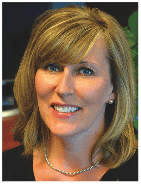By Denis Carpenter and Ann Rule
With ever-increasing power demands due to wireless and advanced digital features, it is more important than ever to inform your patients about issues that affect hearing aid battery life. Here is a short description of the factors involved, as well as a 2-page consumer handout for use by your practice.
Battery technology is always changing and adapting to the new devices that have been introduced in the past and that are currently being developed for the future. And, throughout the history of the hearing industry, battery consumption has been an important issue for consumers using hearing aids, thus requiring dispensing professionals to counsel their clients on proper expectations and appropriate strategies for battery replacement.
The evolution of hearing aid battery technology has gone hand-in-hand with the evolution of hearing aids. This holds true whether you are talking about the size 10 batteries of today that were originally developed by Rayovac (making CICs and mini-BTEs possible), the pre-transistor era of 1949 when we introduced our crown cell alkaline battery for hearing aids, or even 1937 when Rayovac filed a patent for the first vacuum-tube hearing aid, which utilized separate “A” and “B” battery packs. Compromises between hearing aid size, features, and battery life have always been (and continue to be) important “limiting factors” for hearing industry engineers when designing amplification devices. As hearing aids have become more sophisticated, a larger number of consumer needs are being addressed. In some cases, new hearing aid circuitry also has led to more judicious use of power, increasing battery service life.
However, as consumers requested ever-smaller hearing aids (eg, ITEs, ITCs, and CICs), smaller battery cells with less active ingredients to fuel those power cells became a key objective. Advances in zinc-air chemistry and battery cell engineering made it possible to provide more consistent power in ever-shrinking cell sizes. Battery cell designs and chemistry have improved dramatically. For example, when Rayovac introduced the world’s first size 10 battery in 1986, it was a 50 milliAmp (mA) hour battery. Today, it is a 100 mA hour battery—with about 2 times the energy packed into the same size package.
Zinc-air battery technology is something of a modern marvel. In fact, zinc air would probably be the most widely used battery type in the world—surpassing even alkaline batteries in popularity—if not for one problem: those pesky air holes. When you pull off the tab on a zinc-air battery, what you’re really doing is initiating a chemical reaction that generates electricity. Those holes make zinc-air batteries more susceptible to the external environment—incurring a slightly higher risk of drying out or of being affected by moisture. Additionally, once that tab is removed and the battery is activated, the “clock starts ticking” on the zinc-air battery; it has a defined “life cycle.”
Just as compromises to battery service life were made for the sake of making smaller hearing aids, digital and wireless hearing aid features also have substantially affected service life. Noise reduction algorithms and multichannel processing can require substantially more power. Likewise, wireless capabilities—between the two hearing aids and/or between external microphones or devices like TVs, stereos, cell phones, and MP3 players—can draw a lot of power from the batteries. How much? That’s extremely difficult to predict. It can vary by the specific feature or wireless technology involved, the hearing aid manufacturer, and the actual amount of time that each of these features is employed by the hearing aid wearer.
The PDF download below is designed as a consumer handout that explains power demands and battery consumption in a fairly simple manner, and it is deliberately neutral in terms of hearing aid and battery manufacturers. HR readers are encouraged to make copies and use them for educating patients.

|

|
Denis Carpenter is Director of Zinc Air Product and OEM Liaison, and Ann Rule is Director of Marketing, Hearing Aid Batteries, at Rayovac, Madison, Wis. |





